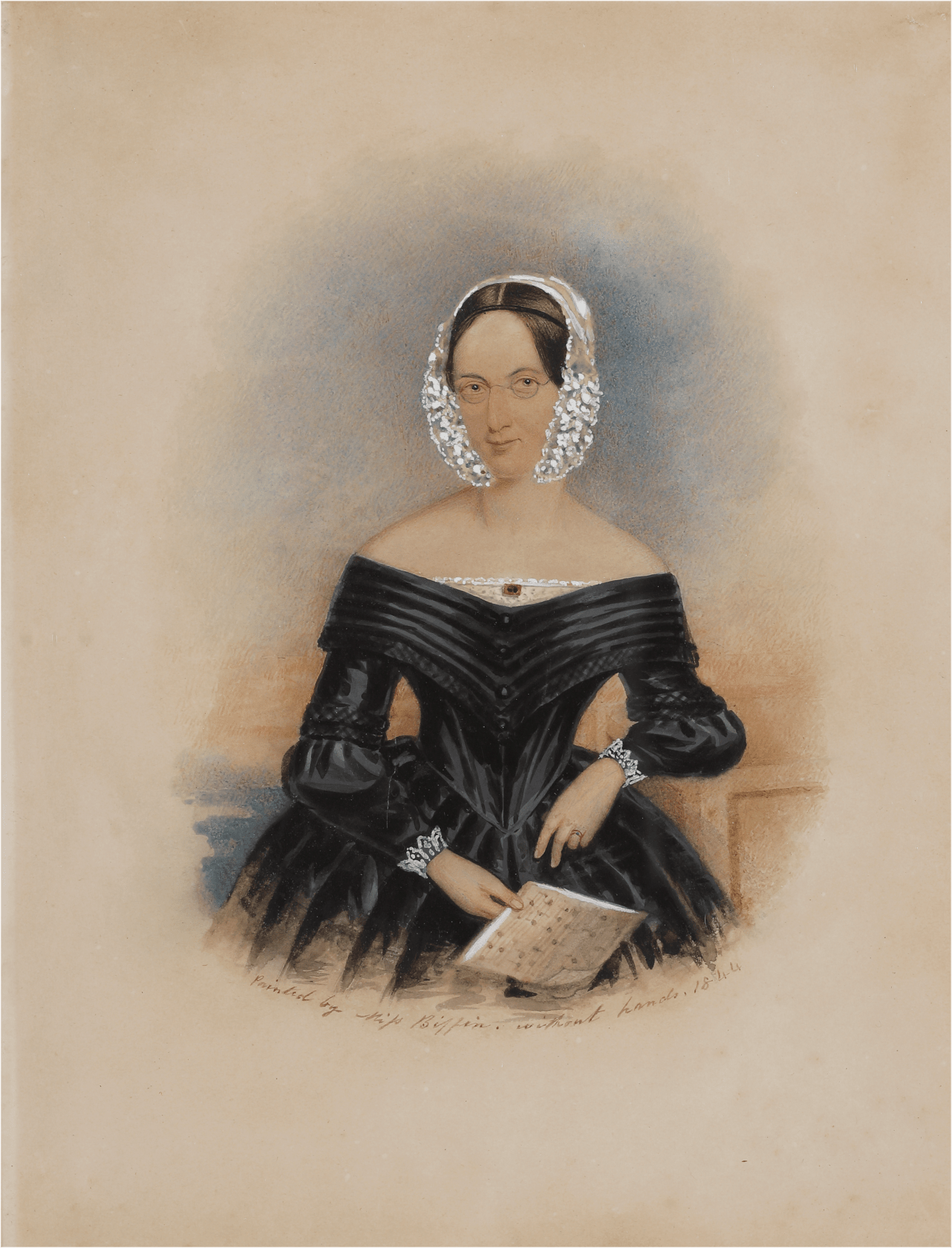This intricate portrait of a music teacher was painted toward the end of Sarah Biffin’s career, one of the most accomplished and entrepreneurial British artists at work during the nineteenth century. Signed ‘Painted by Miss Biffin. without hands.’, this portrait exemplifies Biffin’s deft attention to detail and virtuoso in watercolour likenesses.
Biffin was born into a farming family in Somerset in 1784, and her baptism records show that she was ‘born without arms and legs’. She began her career in 1804, at twenty years old, when a man named Mr. Dukes offered her employment as part of a travelling act: ‘it was suggested to my Parents that a comfortable living might be obtained by Public Exhibition, and an engagement was arranged for that purpose.’[1] Biffin left her family home to travel across the country with Dukes; she signed a contract with her new employer and began a tirelessly itinerant lifestyle, exhibiting at fairs in regional towns and cities across the...
This intricate portrait of a music teacher was painted toward the end of Sarah Biffin’s career, one of the most accomplished and entrepreneurial British artists at work during the nineteenth century. Signed ‘Painted by Miss Biffin. without hands.’, this portrait exemplifies Biffin’s deft attention to detail and virtuoso in watercolour likenesses.
Biffin was born into a farming family in Somerset in 1784, and her baptism records show that she was ‘born without arms and legs’. She began her career in 1804, at twenty years old, when a man named Mr. Dukes offered her employment as part of a travelling act: ‘it was suggested to my Parents that a comfortable living might be obtained by Public Exhibition, and an engagement was arranged for that purpose.’[1] Biffin left her family home to travel across the country with Dukes; she signed a contract with her new employer and began a tirelessly itinerant lifestyle, exhibiting at fairs in regional towns and cities across the length and breadth of Britain where she would sew, write and paint in front of paying crowds. Under these conditions, Biffin began to forge a career as a professional artist and portrait miniaturist.
In 1821, at the age of thirty-seven, Biffin acquired a studio in London and her professional career took off. Throughout her long and successful career, she travelled extensively, took commissions from royalty, and recorded her own likeness through exquisitely detailed self-portraits. Her life was varied, and her artwork sustained her lifestyle, with mixed success. This portrait was painted four years after her royal patron, Princess Augusta, died in 1840. Lacking the security of financial stability and notoriety that royal patronage had bequeathed her, Biffin moved to Liverpool with plans to set sail for America. Although this cross-Atlantic dream never came to fruition, Biffin established herself in Liverpool and continued to further her celebrity as a professional portrait painter for the next eight and a half years, until her death.
Executed in minutely detailed strokes, this portrait is a testament to Biffin’s tenacity in obtaining portrait commissions during an era in which the popularity of the portrait miniature was declining rapidly. Despite these circumstances, Biffin’s determination persisted, and she continued to paint and exhibit her work. This work was painted the same year as her exhibition at The Mechanics’ Institution, Liverpool, and a year after her exhibition at The Liverpool Collegiate School in Shaw Street; her exhibitions at both institutions were likely assisted by Joseph Meyer, an established arts and antiquities collector who became joint Hon. Secretary for the Liverpool Mechanics’ Institution 3rd Exhibition in 1844. Biffin frequently corresponded with Meyer from 1842 until her death, and her letters to him offer insight into her final years, which involved frequent health complications and gradually dwindling commissions.[2] Painted on card, this portrait exemplifies Biffin’s technique at this date; having previously worked predominantly on ivory, by this date she was painting almost exclusively on card and paper (possibly on account of the more affordable price point attached to paper as a medium).
This sitter has previously been described as a sister of Lady Codrington, Woman of the Bedchamber to Queen Victoria, and wife of Sir William John Codrington. Although this attribution has not been confirmed, the likeness present between this sitter and photographs of Lady Codrington is somewhat suggestive of a familial resemblance. Clutched between her thumb and forefinger, a music sheet indicates the sitter’s profession - a music teacher - and her slightly stern expression translates, even today, as refreshingly human.
[1] Sarah Biffin, ‘An Interesting Narrative and proposals for a print of Miss Beffin to be dedicated, by permission to HRH the Princess Augusta’, p.1, 942 BIF/10, Liverpool Record Office, Liverpool.
[2] Corresp and papers by Joseph Mayer, NRA 2664, Liverpool Record Office, Liverpool.















